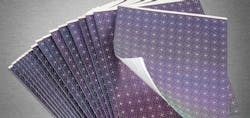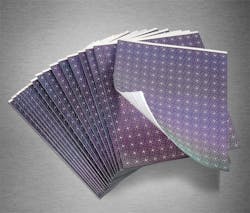D/P Impulse Lines; Chinese Solar Tech
This column is moderated by Béla Lipták automation and safety consultant (http://belaliptakpe.com/) and editor of the Instrument Engineer's Handbook (IEH). For the 5th edition of the IEH, contributors are invited to update old and prepare new chapters. If you have control related questions or have comments on the topics discussed below, write to [email protected]
Q: We're in the process of installing self-regulated, heat-traced impulse lines to a differential pressure (d/p) transmitter that is measuring feed-water flow to a boiler. The piping installation will not allow me to install the transmitter below the water pipe. How do I keep my impulse lines full of water when the pump shuts down? Would it be OK to bend the tubing so as to create a water trap?
Jimmy Ballew
[email protected]
A: If on water service there is a possibility for air getting into the impulse lines or if the lines can plug, freeze, drain, etc., I usually avoid using d/p type sensors with impulse lines at all and install magnetic, ultrasonic or vortex flowmeters. The advantage of the newer vortex meters is that they can also measure temperature.
If for some reason you must use a d/p type flow sensor, I would consider the use of chemical seals with the capillary filled with a non-freezing liquid or side-mounted d/p cells without impulse lines.
Béla Lipták
[email protected]
A: If you're measuring liquid flow, then the impulse lines need to be mounted such that no air can get trapped in them. If the orifice taps are brought out the side of the pipe, you can mount the transmitter to the side, and put just enough slope in the impulse tubing to ensure the water will displace any air in the lines as they fill.
P. Hunter Vegas, PE
www.avidsolutionsinc.com
A: This is a typical problem where the impulse line connection is limited by space availability or other pipings nearby. When take-off taps are on the side of orifice flanges, you have two choices:
- Use an extended diaphragm d/p cell and keep the flange face traced if heat is not going to affect fill fluid. Locating it at a higher plane and zeroing out error due to cell location will give repeatable and accurate readings.
- Mount the d/p cell manifold right on to the flange tap take-off and connect the d/p with necessary support. Tracing will be limited to the manifold and body of the d/p cell.
Note that over extended time your seal water will boil off if tracing is left on, creating a likely vapor trap, resulting in error, though minor. This can happen even if you manage to install the d/p cell below tap level and leave the tracing on.
Ram.G.Ramachandran
[email protected]
A: The steam tracing will evaporate any liquid in the impulse lines that has a pressure of less than the steam pressure.
That's a short answer, but we need more details. Does the plumbing configuration allow the pump and the impulse lines to remain full of water? Probably not, or you wouldn't ask. Where is the transmitter, orifice plate, flow control valve and pump block valve (if any)? Not to mention the steam drum, pump suction source and the type of pump.
As to bending the impulse lines when the fluid is water, bend them any way you like as long as the transmitter can be brought to zero when the lines are full. Using J traps from the bottom of the orifice plate will not solve the problem, even without steam tracing.
If there is something about this problem that requires full impulse lines when geometry and gravity make that impossible, investigate remote diaphragm seals with oil-filled impulse lines.
Bill Hawkins
[email protected]
A: Bends with a transmitter above will be a maintenance headache. I suggest using another device such as an in-line ultrasonic or vortex meter Instead. This will also mitigate the requirement of heat tracing.
H. S. Gambhir
[email protected]
A: Why not have the seal at the transmitter and then use fill fluid that will not freeze or care about orientation?
Another option is to close-couple a "smart" transmitter and then do "all" your work (except when you need to isolate the device) over the signal cable remotely. Rosemount makes a transmitter in which the sensor can be mounted on the process, and the display is mounted remotely with cable between the two components. This allows mounting of capacitance cell without impulse lines, and then placing the local indication at either grade or other accessible location.
Ian Verhappen
[email protected]
Q: At the ISA Conference in Mobile, you used a slide showing that the American share of the global solar collector market is only 0.5%, while China's is 80% for hot water and 60% for photovoltaic designs? Are their products so much better? If not, why are we so far behind?
H. Crowney
[email protected]
A: Neither their controls, nor their converters or collectors are any better and in terms of quality, they are worse. As you can see from Figure 1, our solar technology is one of the finest in the world. Our Nanosolar collector sheets will probably revolutionize the whole industry, because of their excellent electric conductivity and drastically reduced cost of manufacturing (basically the collectors are printed). Similarly, our solar roof shingles and their controls (Fig.2) are also superior to the Chinese product.
Figure 1. Nanosolar's printed solar collector sheets, shown above, may revolutionize the whole industry.
Courtesy of Nanosolar, Inc.
No, this situation has nothing to do with quality, but with politics! The Chinese government can implement business strategies, which ours cannot. Just imagine how hard it would be and how long it would take to have Congress pass a regulation requiring that all U.S. government buildings be covered by American-made PV solar collectors, and also require that the cost of these installations be financed by 15-year "building improvement" mortgages?
Figure 2. Dow Solar has released shingles that generate electricity from solar power. They are inexpensive enough for a family home.
Courtesy of The Dow Chemical Company
Yet, if it were politically possible to do, the solar industry market would suddenly explode. It could hire more people, spend more money on R&D, and the local government could pick the best designs at the lowest cost. Even with the miniscule market today, the cost of solar collectors during the last years has dropped from $3.30/watt in 2008 to $1.20/watt today.
If in all areas where solar insolation exceeds 1,500 kWh/m2/yr, the government buildings ordered collectors, their production and installation would create some 1.5 to 2.0 million jobs. Such projects would do that without any cost to the taxpayers, because during the first 15 years, the monthly mortgage payment for these improvements would be less than the present monthly electricity bill and after that, the fuel (the sun) would cost nothing. Already, on a building in Westport, Conn., 46 collectors were installed at a monthly mortgage cost of $200, less than the previous monthly electricity bill of $215. Once such cost-effectiveness was proved on the government buildings, the "lack of economic feasibility" argument would be disproved, and the general public would follow the example of the government, thereby further increasing the demand. This increased market would create even more jobs, would cut energy imports even more, would allow American manufacturers to further improve their quality, further reduce costs through mass production. Higher quality and lower cost would make us a player on the global market and eventually we would beat the Chinese.
Béla Lipták
[email protected]



